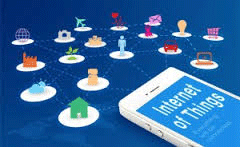 The “Internet of Things” (IoT) is widely accepted as the next “Big Force that would drive Mobility”. In fact, its power is in its promise to exploit the Internet with a multitude of applications and products. This entails products across broad spectrum of the market and not just wireless and mobile applications. In many ways, the IoT is the hardware counterpart to the software “app” market and is unleashing a new wave of creativity around the globe. Entrepreneurs and companies can leverage the existing Internet infrastructure to build a business based on trends like the humanization of technology, increasing embedded and secure intelligence, and smarter energy use to conceive new applications and markets.
The “Internet of Things” (IoT) is widely accepted as the next “Big Force that would drive Mobility”. In fact, its power is in its promise to exploit the Internet with a multitude of applications and products. This entails products across broad spectrum of the market and not just wireless and mobile applications. In many ways, the IoT is the hardware counterpart to the software “app” market and is unleashing a new wave of creativity around the globe. Entrepreneurs and companies can leverage the existing Internet infrastructure to build a business based on trends like the humanization of technology, increasing embedded and secure intelligence, and smarter energy use to conceive new applications and markets.
The IoT is putting each of us as individuals at the edge of the network, thanks to our smart phones and tablets. Things around us are becoming smarter, enabling them to sense the environment and communicate through our mobile communication devices, and by using smart-power and delivering exceptional power efficiency and cost-effectiveness. With the IoT we can connect to devices anywhere at anytime. This network expansion will continue to drive growth for years.
The IoT is going for a big leap now because of pervasive wireless connectivity worldwide, smartphone availability , residential broadband penetration, multi-year coin-cell battery life, energy harvesting, inexpensive low-power embedded-processing capabilities, sensor fusion, IPv6 availability, and cloud computing that effectively make us part of the network. This existing infrastructure simplifies many development problems and lets innovators focus on some of the most important challenges facing today’s society. Still, even with this solid foundation, many challenges are too complex to be solved by technology alone, even though it is clear that the deployment of IoT technologies will be an essential part of the solutions.
IoT in its culmination—where we live in the data age is defined as one that creates an intelligent, invisible network fabric that can be sensed, controlled, and programmed. IoT-enabled products employ embedded technology that allows them to communicate directly or indirectly with each other. Gartner forecast puts things in context. It said that 6.4 bn connected things will be in use worldwide in 2016, up 30% from 2015, and will reach 20.8 bn by 2020. In 2016, 5.5 mn new things will get connected every day. Gartner estimates that IoT will support total services spending of $235 bn in 2016, up 22% from 2015. Services are dominated by the professional category in which businesses contract with external providers is important in order to design, install and operate IoT systems, however connectivity services are provided through communications service providers to the consumer.
Analysts predict that the next revolution in consumer technology will be connected devices, wherein millions of devices will be able to communicate with each other directly. This wave of technology has the potential to significantly enhance the quality of our lives through seamless connectivity of multiple devices via the internet and cloud.
Wearable devices, fitness bands, watches are already enhancing our technology experience by measuring and reporting data such as fitness tracking, vital figures and weather amongst others, enabling us to make smarter choices. IoT has a great potential to revolutionize fields such as healthcare, automobiles, personal appliances and industrial equipment. Through intelligent machine to machine communication (M2M) and Radio Frequency identification (RFID), equipments and devices can record and exchange data, process information and generate machine commands. Driverless cars are a great example of IoT in action, wherein the car collects real time traffic data from GPS to navigate the best possible routes. Big data and intelligence will drive the implementation of IoT as new information will get generated on a real time basis through constant and seamless data flow across devices, servers and geographic borders.
Factories and plants that are connected to the Internet are more efficient, productive and smarter than their non-connected counterparts. The increase use of sensors and readers across the manufacturing and distribution chain can streamline and maximize practices, greatly enhancing productivity. IoT can provide end-to-end visibility across manufacturing operations. Automotive companies are already using IoT-enabled technology to predict faults, quickly respond to maintenance conditions and take proactive action.
This Internet of Thing system solution will mainly comprises of a Gateway board which controls the complete system and couple of sensor nodes having different sensors like temperature, humidity, and light and motion sensor. The information from the different sensor nodes can be viewed on the web application over cloud which can be seen by the user with the help of smartphone anywhere and at anytime. IoT makes it possible to realize the possibility of Smart Home concept. Consumer can monitor their home 24×7 from their Smartphones and give commands to the electronic gadgets connected to the Gateway to wake-up from their sleepy state. Single application can be used for all the connected gadgets which would make the consumers life comfortable
With more and more connected devices, IoT will finally converge to IoE(Internet of Everything). All the intelligent nodes will be directly connected to the internet and be available to the user at any time. People will be more connected with technologies which will make their life more easy and comfortable.






